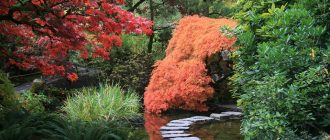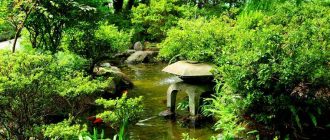Can’t decide what maple is right for your garden? Get the insight on the popular Japanese lace leaf maple.
The Japanese are known to possess a deep love for nature. Their attempts to become one with nature can be seen with the seriousness that they attach to gardening. Japanese gardens are works of art that are aimed at imitating the beauty of nature and producing a tranquil environment. There is a fine selection of trees that is commonly found in Japanese gardens. Amongst the many different trees used is the broad category of Japanese maple trees. Although there is immense diversity in this category one particular variation that deserves separate mention is the Japanese Laceleaf maple tree.
This unique tree is one of the most popular choices when it comes to jazzing up your Japanese garden. Known as the dissectum in botanical terms the Laceleaf is one tree that many people are familiar with due to its widespread use. In fact the popularity of this particular variation of the maple tree collection has some people thinking that this is the one and only Japanese maple tree.
The truth however is quite the contrary. The Japanese laceleaf maple tree is only one of the many varieties of brilliant trees found within the broader category of Japanese maple trees.
Laceleaf Maple Features
The Japanese Lacelleaf maple tree has two very distinctive features that make them stand out from the rest of the collection. First of all is the shape of their leaf lobes which are extremely narrow and serrated. This is what gives them that lacy appearance.
The second personality trait of the Japanese Laceleaf maple tree that sets it apart from others is the shrub like shape that it tends to form because of its weeping branches. The Japanese Laceleaf maple takes on the shape of a mushroom as it comes into its full and hardly ever exceeds a maximum height of five feet.
This is not to say that Japanese Laceleaf maples do not grow taller than five feet. Indeed they may grow a considerable level higher than the limit mentioned above but that will take many long years. Hence the average height is usually described as nearing five feet.
With regards to the colour variety of the laceleaf maple tree you will find them to be in different shades of green and red. Most commonly however you will find Japanese Laceleaf trees in burgundy colour.
The laceleaf maple has a number of cultivars. An example is the toyama nihiki. You will even be able to find a couple of exceptions to the mound like form that these trees generally take on. The Seiryu for example is a variation of the Japanese laceleaf maple that stands completely upright. The leaves on the tree are however exactly like the mounding laceleaf.
Certain new experiments have yielded interesting results regarding the Japanese laceleaf maple. The holy grail of Japanese maples is a bright red upright tree that has been grafted out of a newly discovered cultivar known as lion heart. Laceleaf maples can be staked but they will continue to hold their mounding shape even if their height increases.





